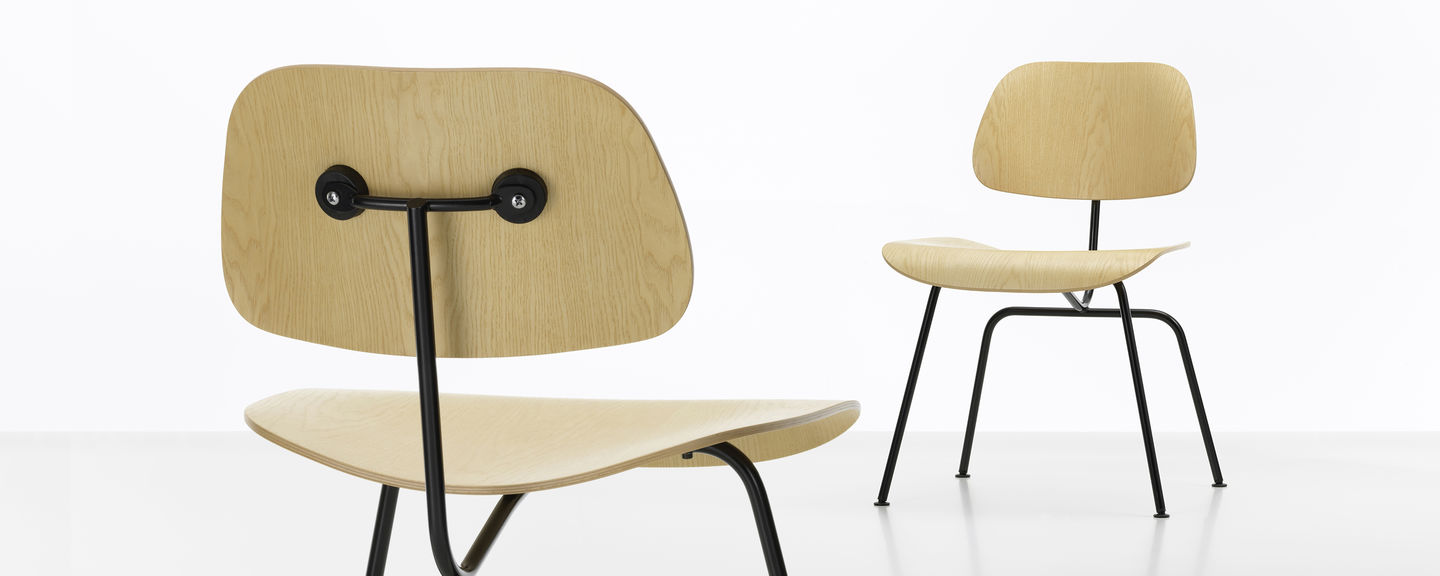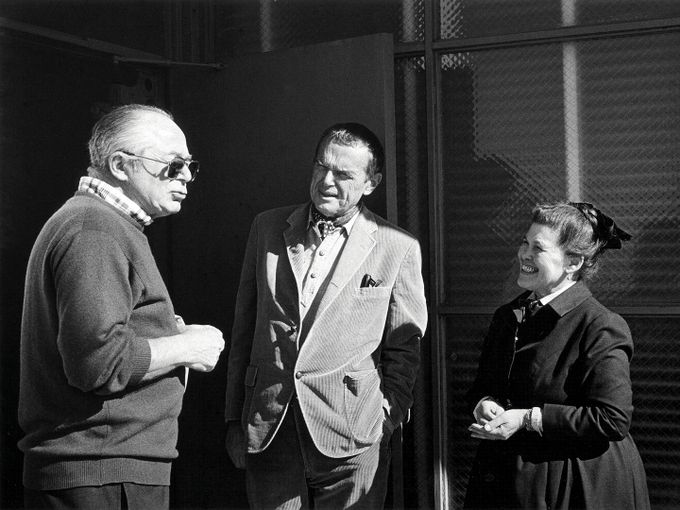Potato Chip Chair
A Vitra Anecdote

The highly popular DCM by Charles and Ray Eames was nicknamed the Potato chip chair.
Originally labelled DCM – an acronym for the very sober moniker, “Dining Chair Metal” – Charles and Ray Eames’ first serially-produced chair was nicknamed the Potato Chip Chair soon after its release. But what does the chair with a three-dimensionally curved plywood seat have in common with a potato?
For one, it cannot be denied that there exists a certain similarity between the thin, oval, slightly curved plywood seat and backrest and a crisp potato chip. But more importantly, the nickname embodies the love people felt for a chair that was praised as “a message of hope from another planet.”*
Indeed, the impact of the plywood chairs made by Charles and Ray Eames was huge. Not only were they unlike anything that had been seen before, they could be found everywhere. Serially produced and sold in extraordinary numbers to schools, universities, offices and public institutions, the Potato Chip Chair pervaded American culture – and beyond. Images of the chairs appeared everywhere – on magazine covers, advertisements, album covers, and even in comic books – and the chair became one of the most popular chairs ever, as universally beloved, as, well, the potato chip.
For one, it cannot be denied that there exists a certain similarity between the thin, oval, slightly curved plywood seat and backrest and a crisp potato chip. But more importantly, the nickname embodies the love people felt for a chair that was praised as “a message of hope from another planet.”*
Indeed, the impact of the plywood chairs made by Charles and Ray Eames was huge. Not only were they unlike anything that had been seen before, they could be found everywhere. Serially produced and sold in extraordinary numbers to schools, universities, offices and public institutions, the Potato Chip Chair pervaded American culture – and beyond. Images of the chairs appeared everywhere – on magazine covers, advertisements, album covers, and even in comic books – and the chair became one of the most popular chairs ever, as universally beloved, as, well, the potato chip.
More information on the topic of Eames furniture is found in the "Eames Furniture Sourcebook" and “Essential Eames”, two new publications by the Vitra Design Museum, available in German and English editions from booksellers or directly from the VDM publishing house.
Publication Date: 17.6.2014
Author: Anniina Koivu
Images: Marc Eggimann
*Alison Smithson: And now Dhamas are dying out in Japan. Architectural Design, September 1966.


